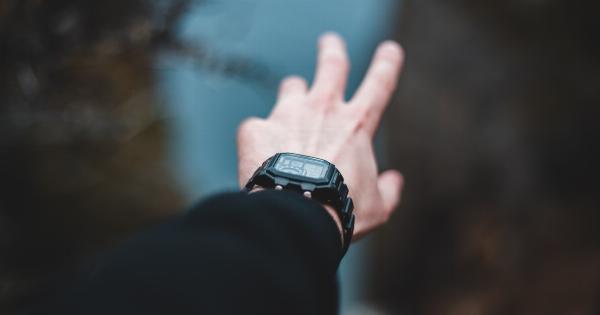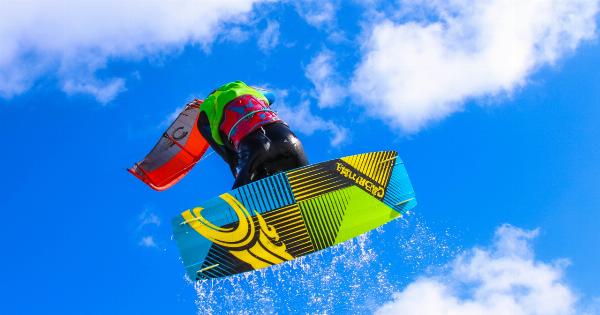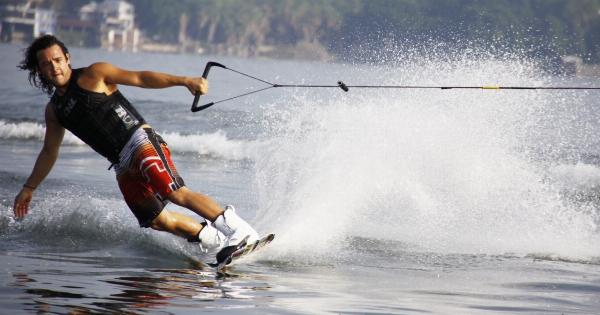Water sports can be an exhilarating way to have fun and stay active. Whether you enjoy swimming, surfing, jet skiing, or any other water activities, it’s important to prioritize safety to prevent personal injuries.
While water sports can provide an adrenaline rush and a sense of freedom, they also come with inherent risks. By understanding these risks and taking necessary precautions, you can enjoy water sports while minimizing the chances of getting injured.
Common Water Sports Injuries
Participating in water sports can expose you to various types of injuries. Here are some common injuries associated with water activities:.
1. Drowning
Drowning is a significant concern for anyone engaging in water sports. It is crucial to be a strong swimmer and wear appropriate life jackets or personal flotation devices (PFDs) when necessary.
Additionally, always swim with a buddy and be aware of your limits.
2. Hypothermia
Participating in water activities in cold water can lead to hypothermia, a condition where your body loses heat faster than it can produce.
Wear appropriate wetsuits or thermal protection to prevent this condition and know the signs of hypothermia, such as shivering and disorientation.
3. Watercraft Collisions
Water sports involving boats or Jet Skis can pose a risk of collision injuries. Always follow boating and watercraft safety guidelines, maintain a safe distance from other watercraft, and be aware of your surroundings.
Stay vigilant and follow the rules of the waterway to minimize the risk of accidents.
4. Sprains and Strains
Water sports activities often involve sudden movements, jumps, or twists, which can lead to sprains and strains.
Warming up adequately before starting any water activity and using proper techniques while performing tricks or maneuvers can help prevent these types of injuries.
5. Sunburn and Heat-related Illnesses
Spending hours in the sun while participating in water sports can increase the risk of sunburn and heat-related illnesses, such as heatstroke.
Apply waterproof sunscreen, wear protective clothing and a wide-brimmed hat, and stay hydrated to avoid these conditions.
6. Impact Injuries
Activities like surfing or wakeboarding may expose participants to impact injuries due to falls or collisions with objects in the water.
Be mindful of your surroundings, avoid dangerous areas, and use protective equipment such as helmets to reduce the risk of head injuries or fractures.
7. Marine Life Injuries
Encounters with marine life can result in injuries, such as jellyfish stings or bites. Be aware of the local wildlife and follow guidelines provided by lifeguards or local authorities. If stung or bitten, seek medical attention immediately.
8. Fatigue and Overexertion
Water sports can be physically demanding, leading to fatigue and overexertion. Give yourself breaks, stay hydrated, and know your limits. Pushing yourself too hard without proper rest can increase the risk of accidents and injuries.
9. Waterborne Infections
Swimming in untreated or contaminated water can expose you to various waterborne infections, such as gastrointestinal illnesses or skin infections. Avoid swimming in polluted or stagnant bodies of water, and shower thoroughly after water activities.
10. Facial and Eye Injuries
Water sports like water skiing or wakeboarding can increase the risk of facial and eye injuries if you fall face-first into the water or collide with equipment. Wear protective goggles or a face shield to prevent injuries to your eyes and face.
Protecting Yourself from Water Sports Injuries
While the risks associated with water sports may seem daunting, there are several steps you can take to protect yourself and reduce the chances of sustaining personal injuries:.
1. Learn Proper Techniques
Before engaging in any water sport, invest time in learning proper techniques and safety guidelines. Enroll in lessons or seek guidance from experienced instructors who can teach you essential skills and emphasize safety measures.
2. Wear Appropriate Safety Gear
Always wear the necessary safety gear for the specific water sport you are participating in. This may include life jackets, wetsuits, helmets, goggles, and other protective equipment.
Proper gear can significantly reduce the risk of injuries and safeguard your well-being.
3. Stay Informed about Weather Conditions
Check the local weather forecasts and water conditions before heading out for any water activities.
Avoid participating in water sports during storms, strong currents, or other adverse weather conditions that can increase the risk of accidents and injuries.
4. Swim in Designated Areas
Stick to designated swimming areas whenever possible. These areas are typically monitored by lifeguards and are known to be safe for swimming. Avoid venturing into unknown or dangerous waters without proper supervision.
5. Avoid Alcohol and Substance Use
Never participate in water sports while under the influence of alcohol or drugs. Impaired judgment and coordination increase the likelihood of accidents and injuries. Stay sober to ensure your safety as well as that of others around you.
6. Follow Boating and Watercraft Regulations
If you’re operating a boat or Jet Ski, familiarize yourself with boating regulations and follow them strictly. Understand right-of-way rules, maintain a safe speed, and avoid reckless behaviors that endanger yourself or others on the water.
7. Swim with a Buddy
Whenever possible, swim with a companion. Having someone nearby can provide assistance in case of emergencies. It’s also helpful to have someone watching from shore or on a nearby boat to keep an eye on your safety.
8. Regularly Check and Maintain Equipment
Inspect your water sports equipment regularly to ensure they are in good working condition. This is particularly important for items like life jackets, ropes, and other safety gear.
Faulty or damaged equipment can compromise your safety, so repair or replace any faulty items promptly.
9. Take Breaks and Stay Hydrated
Water sports can be physically demanding, so listen to your body and take regular breaks. Resting when you feel fatigued or dehydrated helps prevent accidents and reduces the risk of overexertion injuries.
Always carry water with you to stay hydrated during your activities.
10. Be Mindful of Water Quality
Prioritize swimming in clean and well-maintained bodies of water to avoid waterborne infections. Avoid areas that may be contaminated or have poor water quality. If you notice any signs of pollution, report them to the appropriate authorities.
By adhering to these safety tips and guidelines, you can minimize the risks associated with water sports and significantly reduce the chances of personal injuries.
Always prioritize your safety and the safety of those around you while enjoying the thrilling experience of water activities.































